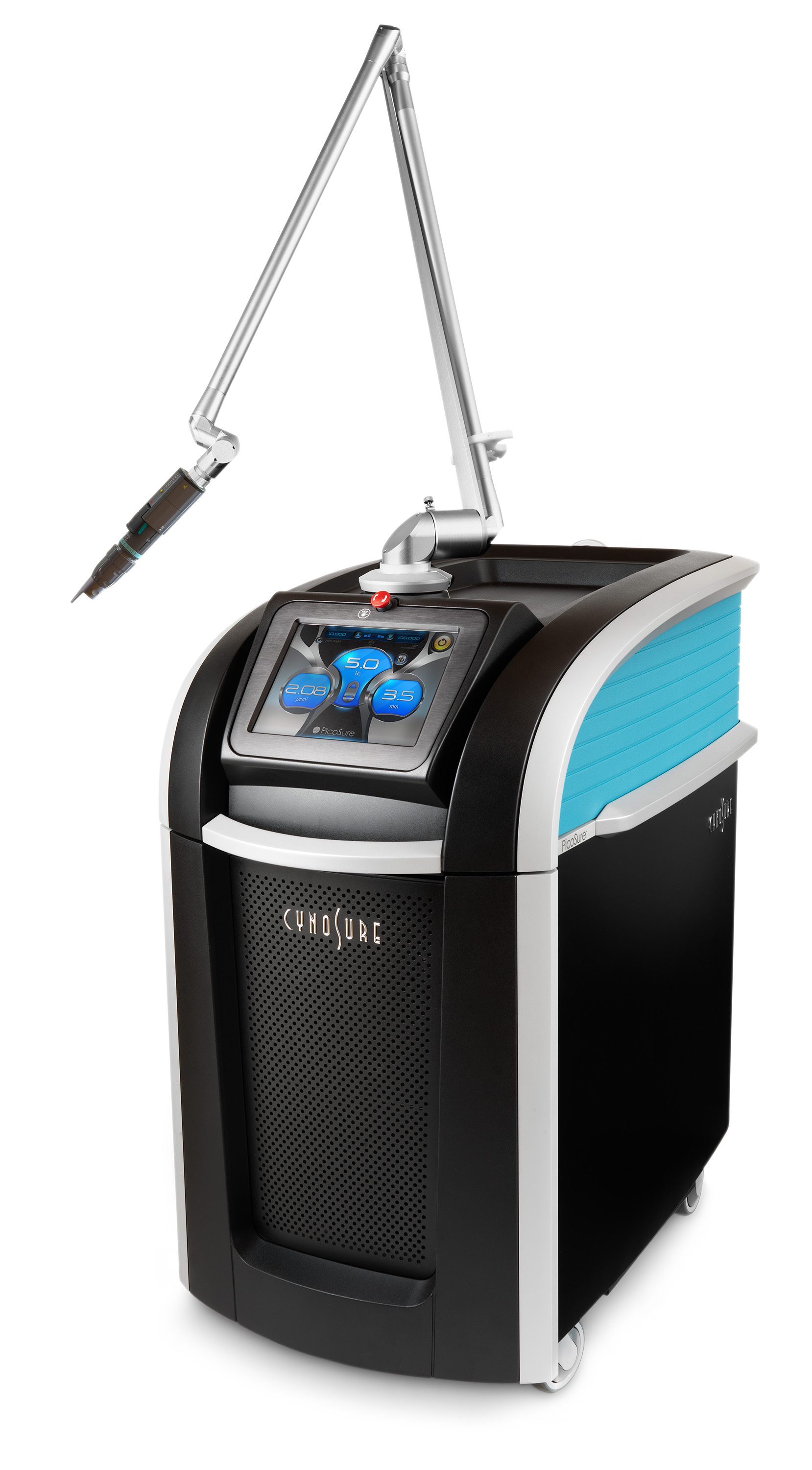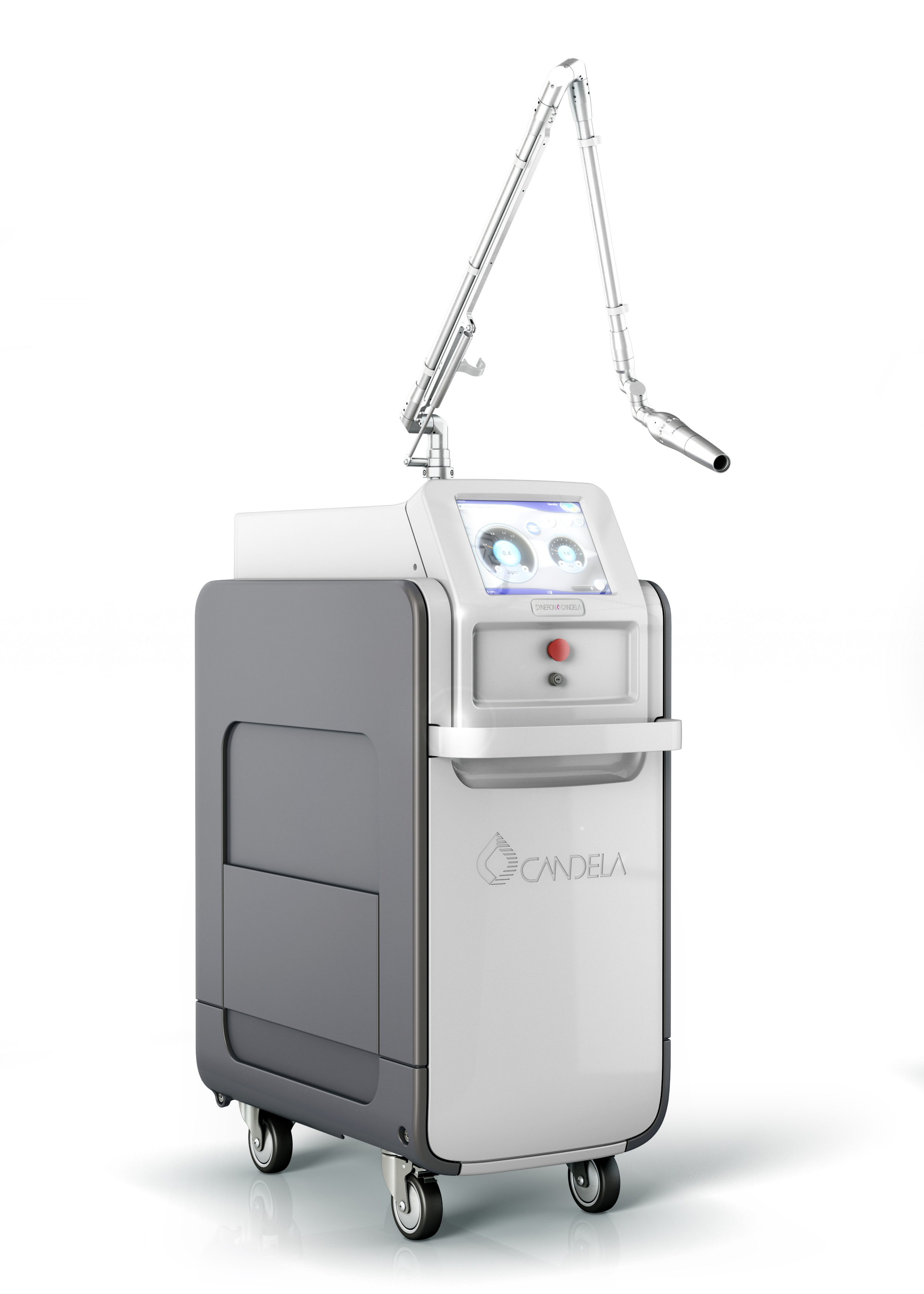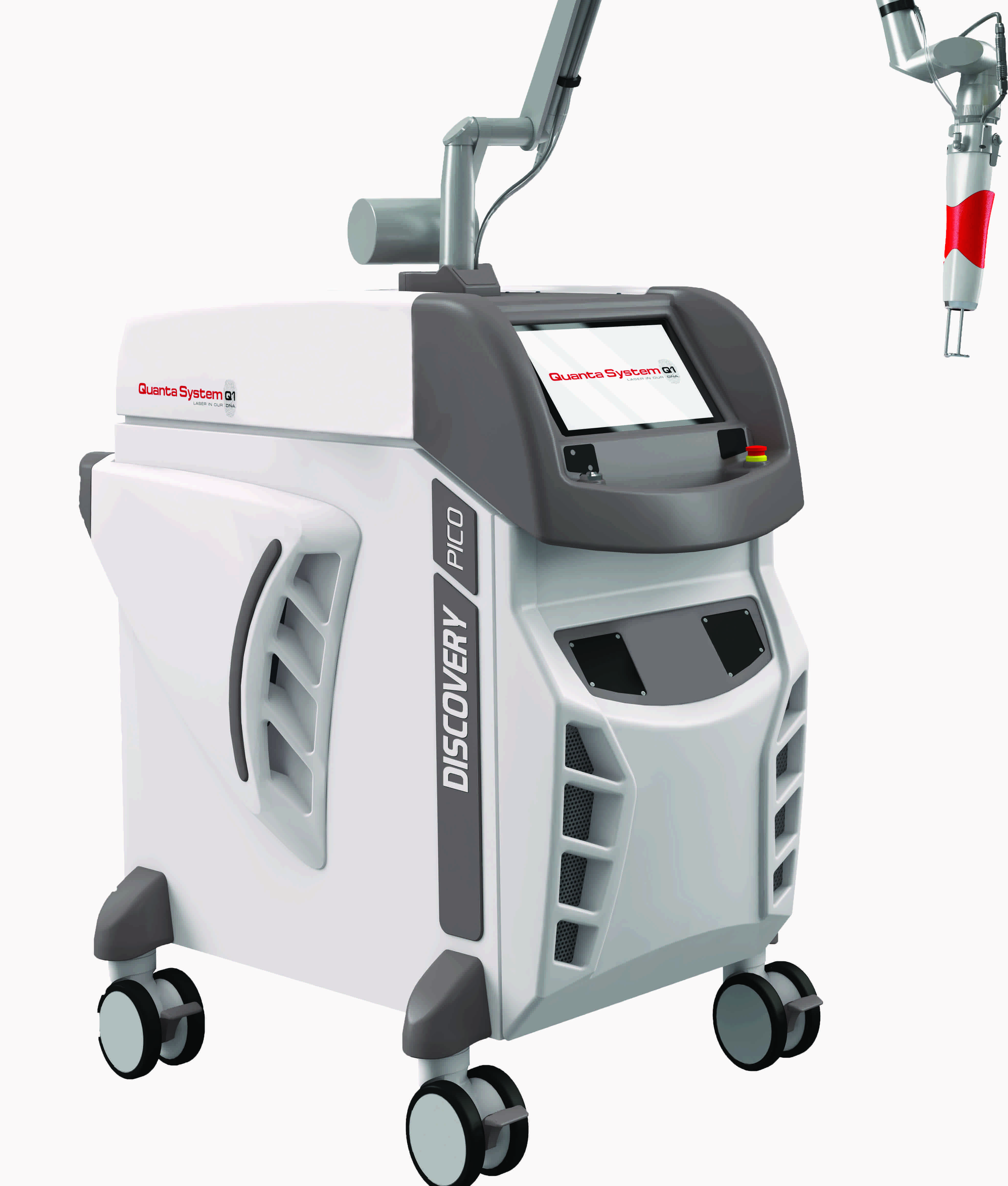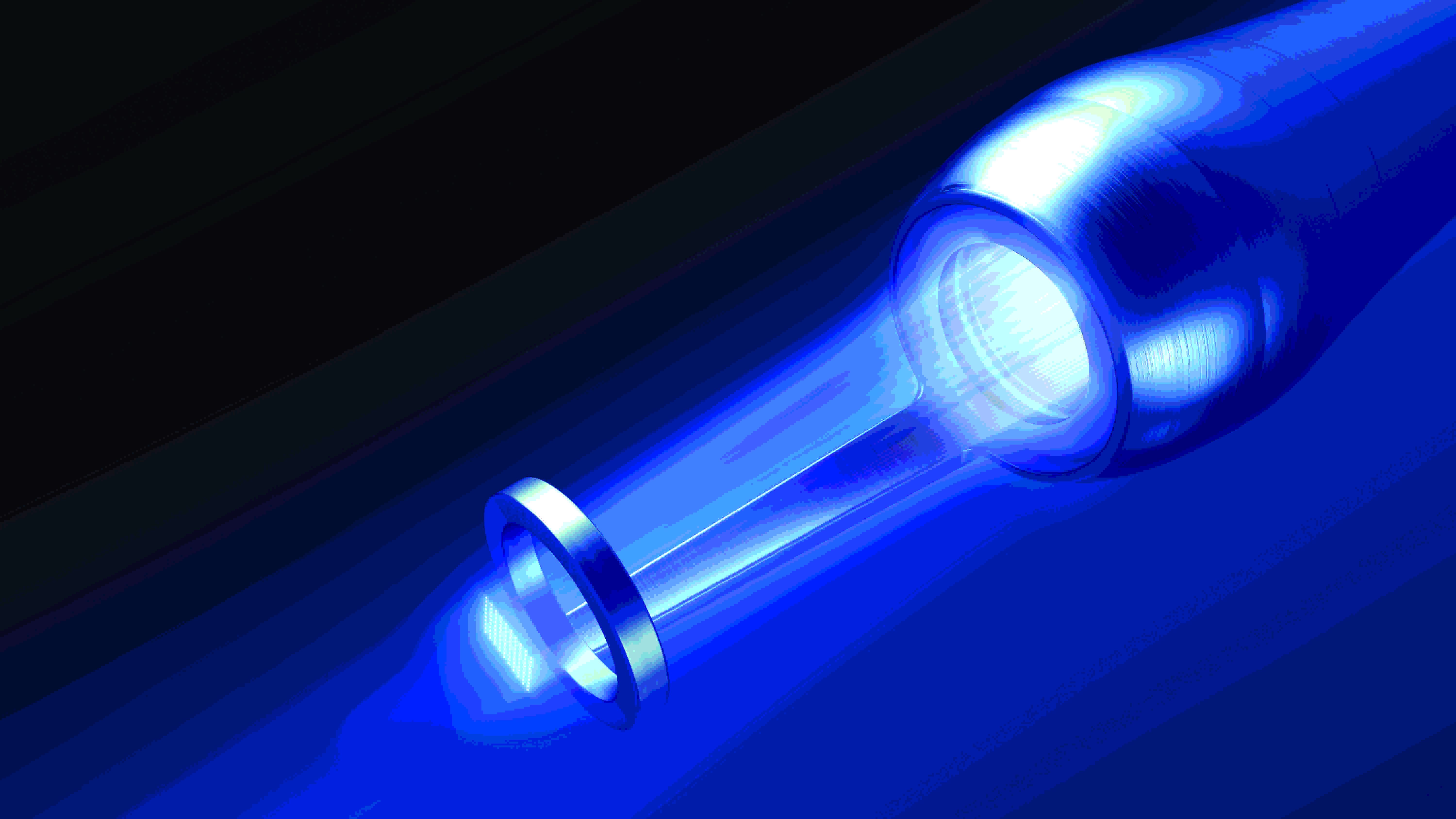Second to none?
One field of aesthetics that has arguably seen more innovation than any other in recent years is laser. With new technologies minimising downtime, at the same time as widening the scope and broadening the parameters of indications and skin types that can be safely treated, lasers are now one of the most versatile tools at the aesthetic practitioners’ disposal.
The latest development to fit this mould is picosecond lasers. A picosecond laser is a device which emits super fast pulse widths of less than one nanosecond. As such they have been described as the “next generation” in ultrashort pulse laser technology.
Although picosecond technology has been available in the non-clinical setting for decades, the use of picosecond lasers in skin is still very much in its infancy. The potential for the application of picosecond lasers in the skin was first discussed in the dermatological literature in the late 1990s. Discussion centred around whether experimental picosecond lasers demonstrated greater efficacy over their nanosecond predecessors in the context of targeted destruction of tattoo ink (1). But it would be almost two decades after those initial hypotheses that the first FDA-approved picosecond laser would become available for aesthetic clinics with the launch of the PicoSure from Cynosure in 2012. Since then three other laser companies have brought picosecond devices to market – Syneron Candela (PicoWay), Lynton (Discovery Pico) and Cutera (enlighten).
Jon Exley, managing director of Lynton Lasers who has a PhD in laser physics and is Honorary Secretary of the British Medical Laser Association (BMLA), explains, “In the world of physics picosecond is definitely not new, the research that is going on now is into femtosecond lasers, however, what is a step forward is the fact that the industry has managed to commercialise picosecond lasers now and make them affordable. “One of the issues with the old pico lasers were that the average powers weren’t as good so the spot sizes were very small. More recently, advances in technology and improvement in optics have allowed higher average powers giving bigger spots sizes in pico-pulse, making it more viable in clinical applications.”
So what is the advantage of these picosecond pulses and why is this a significant step forward? It is claimed that, because these devices have the ability to deliver energy to tissue in a shorter duration of time than preceding technologies, this enables higher energy density, more specific targeting of smaller particles, more efficient delivery of energy, and lower thermal diffusion to surrounding tissues. For clinics and patients this means more precise and faster treatment with less thermal damage to the surrounding tissue.

PICOSECOND LASERS FOR TATTOO REMOVAL
Tattoo removal is becoming increasingly popular. It’s estimated that 38% of men and women between the ages of 18 and 29 years have at least one tattoo and that up to 50% of people may regret having that tattoo. To support the launch of its PicoWay device, Syneron Candela spoke to 2,000 men and women across the UK. According to the research, 12% of the women surveyed and 8% of the men had already undergone a tattoo-removal procedure. This means the potential market for tattoo removal is huge and this is where picosecond technology is thriving.
Owner of PHI Clinic London Dr Tapan Patel comments, “I have queues of patients at my clinic wanting their inkings removed either due to errors, because they no longer like them, they feel too old or simply because they are bored of it and want to replace it with a new one.” Tattoo removal using lasers really came into its own with the evolution of the Q-Switched or “quality switched” laser which reduced the pulse duration of the laser to nanoseconds. Picosecond technology has reduced the pulse duration even further by making it sub nanosecond.
Jo Martin, clinical director at Mapperley Park Clinic, has been doing tattoo removal for more than 22 years. She explains, “The introduction of picosecond lasers is really the first exciting thing that has happened in tattoo removal. Picosecond lasers are about 10 times faster than Q-Switched lasers. We are talking about pulses that are so fast that the shattering effect is so much more efficient and the heat we are generating in the skin is so much less. It means we can reduce the number of treatments, which is really useful because removing a tattoo can take a long time, it also means we can do the treatments more closely together if we want to. This means pico technology is going to give us a much better and more efficient and therefore faster removal than anything that has ever come before which is quite exciting.”
The news of a laser being developed that made tattoo removal faster and more efficient and, some claim, less painful, has meant that picosecond lasers have received a lot of media coverage and, as such, consumer demand has spiralled. In fact, Exley believes that this may be driving demand for picosecond technology in laser clinics. He comments, “The consumer has become aware of pico as a treatment for tattoos and some people that we are speaking to are interested in pico technology because they think it is going to drive more clients into their business.” However, he is more cautious about singing the praises of pico as a game changer in tattoo removal. He says, “There is definitely a clinical benefit to picosecond lasers. I believe you can achieve clearance in less treatments, for example, than normal nanosecond lasers. I also believe you can probably remove some ink that is further into the tissue, but I do think there are some downsides. “Picosecond is a very aggressive laser. The problem in my opinion is with darker skin types as you do run the potential risk of hypopigmentation, more so than with Q-Switched lasers.”


Exley believes that the most effective way to treat tattoos is to combine different laser technologies, which Lynton has done with its device, the Discovery Pico. He says, “In my view picosecond is a very good tool alongside all of the other tools you have got to treat tattoos. It definitely offers some great advantages, fading tattoos faster than the traditional lasers is probably one of them. If you walk in with light coloured skin and a black tattoo then the picosecond laser is a great choice, however, if you have only got a picosecond laser, you are going to limit yourself as to who you can treat. “At the end of the day if you want to get clearance of tattoos with multiple colours still the most important characteristic in your laser in wavelength. We also have the Q-Plus C that is just a nanosecond laser, not picosecond, but it has three wavelengths the Nd:YAG 1064nm and 532nm and the ruby 694nm. If you want the best treatment for colours I would still advise those different wavelengths.”
One device which recently achieved FDA clearance for all tattoo colours – red, yellow and orange for the 532nm wavelength and black, brown, green, blue and purple for the 1064nm wavelength – is the PicoWay from Syneron Candela. In support of the FDA 510(K) clearance, the performance of the PicoWay system was evaluated in a prospective, US multicenter study. A large majority of subjects (86%) achieved at least 50% tattoo clearance after only three treatments. The treatment also presented a favourable safety profile with no device-related serious adverse events, and low levels of pain or discomfort throughout the study.
Dr Eric Bernstein, president of Main Line Center for Laser Surgery, says, “PicoWay is an innovative and exciting breakthrough for tattoo removal. As a dual wavelength Nd:YAG laser, it delivers extremely high peak-power, picosecond pulses enabling the treatment of all skin types. What this means is extremely impressive results, which translate into very happy patients.” The PicoSure also claims to be able to treat the full colour spectrum of tattoo inks by combining 755nm and 532nm wavelengths, the latter being designed to more effectively treat red, orange, and yellow tattoo ink. Traditional nanosecond lasers predominately rely on photothermal action, delivering heat to the pigment and surrounding tissue. PicoSure uses PressureWave Technology to shatter the target ink into tiny particles that are easily eliminated by the body. It claims this allows the device to provide better clearance with fewer treatments and less fluence and without injury to the surrounding skin.
PICOSECOND LASERS FOR SKIN REJUVENATION

Although picosecond lasers have been largely reported in terms of their application in tattoo removal, new modalities for their use in other areas, such as skin rejuvenation, scar revision and removal of pigmentation, are now being explored. Both Syneron Candela and Cynosure have now extended the use of their pico devices to include rejuvenation. The PicoSure Focus (Cynosure) can be used for skin revitalisation, toning and texture, acne scars, wrinkles and fine lines and pigmented lesions.
Roy Geronemus, director of the Laser and Skin Surgery Center of New York and clinical professor of dermatology, NYU Medical Centre explains, “Our histologic analysis following PicoSure treatments revealed a remarkable ‘lengthening’ of the elastin fibres in the skin which has been previously seen with ablative CO2 resurfacing lasers which required extended patient recovery periods. The PicoSure technology is unique as we are seeing a global improvement in the overall quality of the skin from a non-ablative laser that leaves patients with virtually no recovery time.”
Syneron Candela’s PicoWay Resolve hand-piece was launched in late 2015. Resolve is the only picosecond device on the market to employ a holographic fractionator to deliver precisely consistent energy to the entire treatment area. Resolve’s two wavelengths enable treatment of shallow lesions with the 532nm wavelength, while the 1064nm wavelength is used for deeper lesions and to treat all skin types, with no downtime.
David Friedman, MD, a board certified dermatologist, says, “We recently began to use the PicoWay fractional hand-pieces for skin rejuvenation, acne scars and wrinkles with improvement in skin tone, brightness and texture after one or two treatments.”
Professor Thomas Proebstle, one of the first dermatologists in Europe to start using the Resolve, is also excited by its potential. He says, “I think many laser users are not aware how big this step is. We still think in photo relaxation terms. We still rely on the fantastic work of Rox Anderson published in the 80s in lots of our daily work but now we are starting to enter stress relaxation and photo acoustic interaction and this is something which offers incredible new opportunities.”
Exley comments, “We are not actually pushing the skin rejuvenation application at this stage with the pico. I’m not saying it doesn’t work just that we haven’t got any evidence to suggest whether it is any better or any worse. I actually think a more interesting application for pico is pigmented lesions. Picosecond lasers are very well suited to targeting melanin so they might be a very good option for treating some pigmented lesions that couldn’t be treated well before – melasma for example. We haven’t done any work on that yet so I wouldn’t say you can use this for melasma but I would say this is an interesting area that needs further research and one in which picosecond might give some new advantages.”
CONCLUSION
Picosecond lasers are an exciting development and offer significant advantages for tattoo removal in many cases. They also offer some interesting new applications for skin rejuvenation, although this use is a very new area and more data, in-clinic experience and clinical evidence is needed to determine whether or not pico devices offer the same advantages in this area as they do for tattoo removal.
REFERENCES
1. Freedman JR, Kaufman J, Metelitsa AI, Green JB. Picosecond lasers: the next generation of short-pulsed lasers. Semin Cutan Med Surg. 2014 Dec;33(4):164-8. 2. Robert M. Herd, MD, Maria Beatrice Alora, MD, Bruce Smoller, MD, Kenneth A. Arndt, MD, and Jeffrey S. Dover, MD, FRCPC. A clinical and histologic prospective controlled comparative study of the picosecond titanium: sapphire (795 nm) laser versus the Q-switched alexandrite (752 nm) laser for removing tattoo pigment. J Am Acad Dermatol 1999;40:603-6. 3. Ross V, Naseef G, Lin G, Kelly M, Michaud N, Flotte TJ, Raythen J, Anderson RR. Comparison of responses of tattoos to picosecond and nanosecond Q-switched neodymium: YAG lasers. Arch Dermatol. 1998 Feb;134(2):167-71. 4. Jeremy A. Brauer, MD; Viktoryia Kazlouskaya, MD, PhD; Hamad Alabdulrazzaq, MBBCh; Yoon Soo Bae, MD; Leonard J. Bernstein, MD; Robert Anolik, MD; Patricia A. Heller, MD; Roy G. Geronemus, MD. Use of a Picosecond Pulse Duration Laser With Specialized Optic for Treatment of Facial Acne Scarring, JAMA Dermatol. 2015;151(3):278-284

